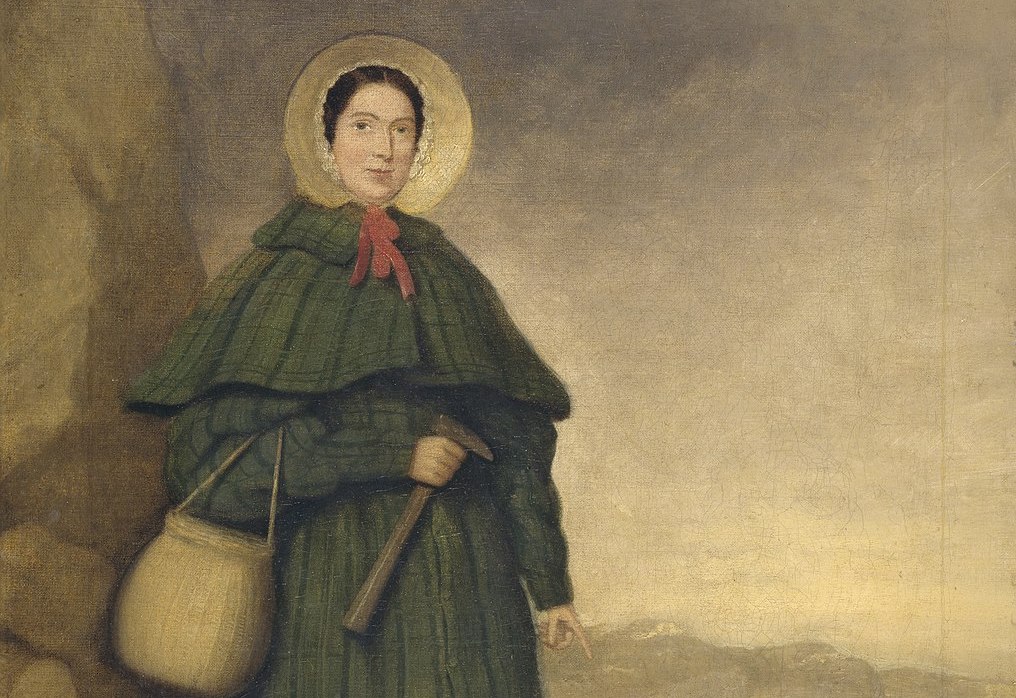
Mary Anning made some of the most significant geological findings of all time. The dinosaur specimens she uncovered spurred the early development of paleontology and shocked the scientific community. Her discoveries led to changes in scientific thinking about prehistoric life and the history of the Earth. However, for years Anning remained largely unsung, with her personal life clouded in obscurity.
Described as “the greatest fossilist the world ever knew,” Anning was a woman trying to make it in the man’s world of Georgian and Victorian England, where women were not allowed to receive a formal education, let alone be an accredited member of the scientific community.
Anning was born in Lyme Regis in Dorset, England in 1799. The Anning family lived in poverty and her education was limited, but she was able to attend a Congregationalist Sunday school, where she learned to read and write. She taught herself geology, anatomy, paleontology, and scientific illustration.
To get by, the family sold fossils from Lyme Regis, with Mary quickly developing a keen eye and taking charge of the family business after her father’s death. The cliffs where she lived were rich with specimens, and Anning discovered several large vertebrates embedded there. She found ichthyosaur skeletons that were in excellent shape, the first Pterodactylus to be found outside of Germany, and, perhaps her most important discovery, the first-ever plesiosaur.
French zoologist Georges Cuvier authenticated Anning’s discovery, making her name briefly well-known, and the paleontology community took notice. The fossils she and her family found were eagerly sought by museums, scientists, and European nobles. However, the majority of Anning’s treasure ended up in museums and personal collections uncredited. Several were described in prestigious journals without mentioning her name.
Anning, however, did not go completely unrecognized, especially during the last decade of her life. She collected annuities from the British Association for the Advancement of Science and the Geological Society of London, which were set up in recognition of her contributions to science, and was the first honorary member of the new Dorset County Museum.
Anning died from breast cancer at the age of 47 in 1847. Her death was recorded by the Geological Society, which would not allow women until 1904. Anning has since been commemorated with a statue, commemorative coins, and recognition by the Royal Society as one of the 10 most influential women scientists in British history.
